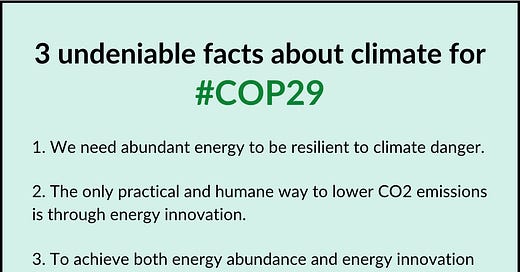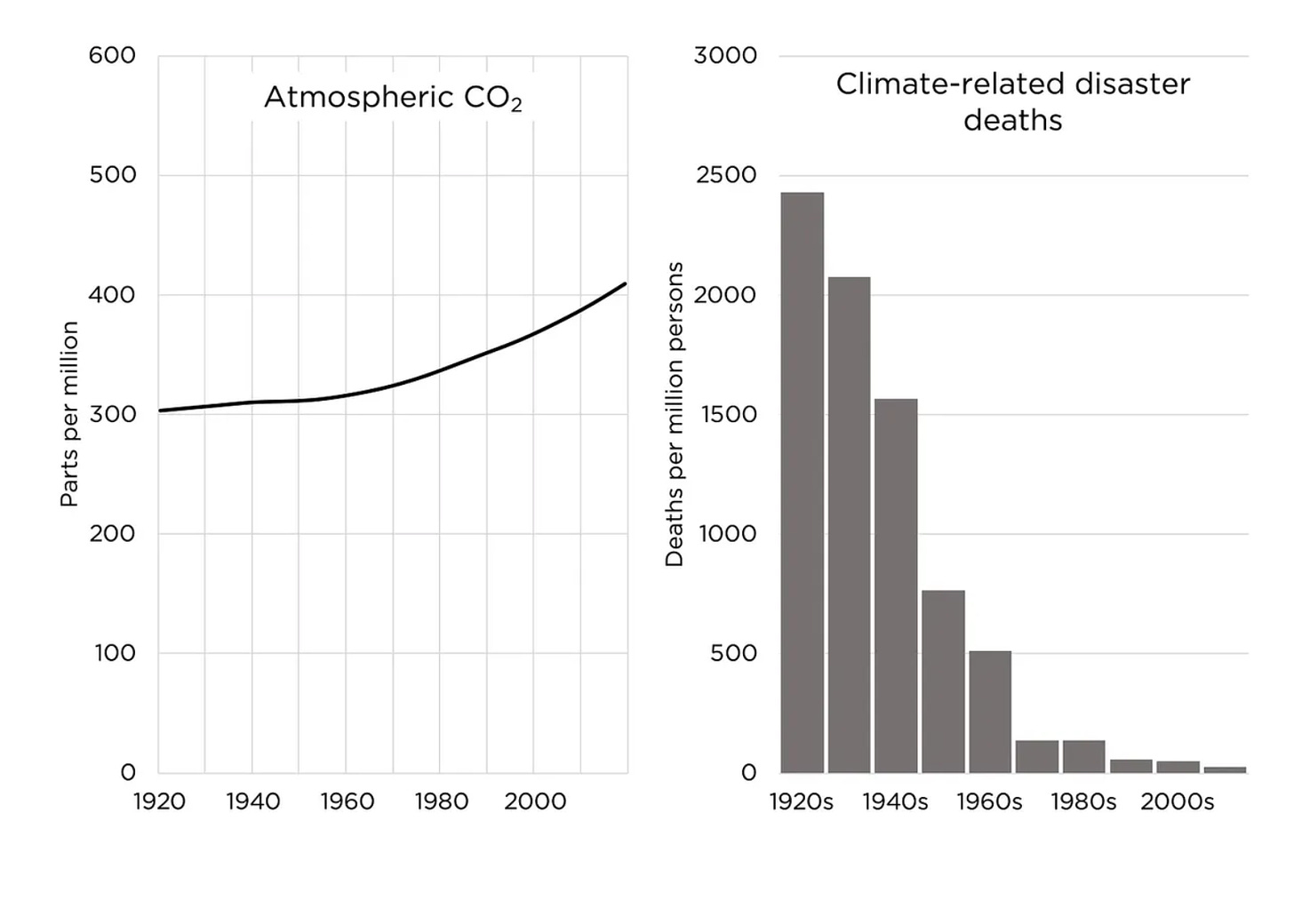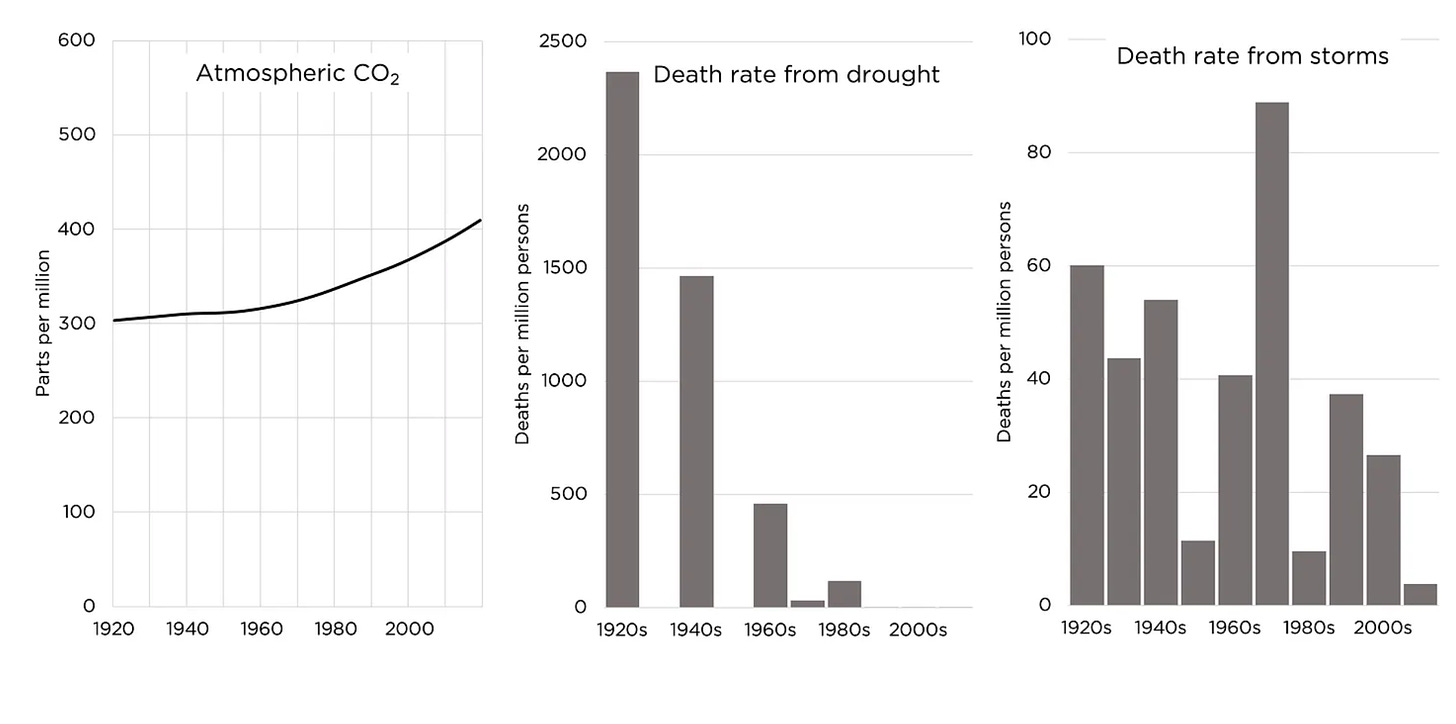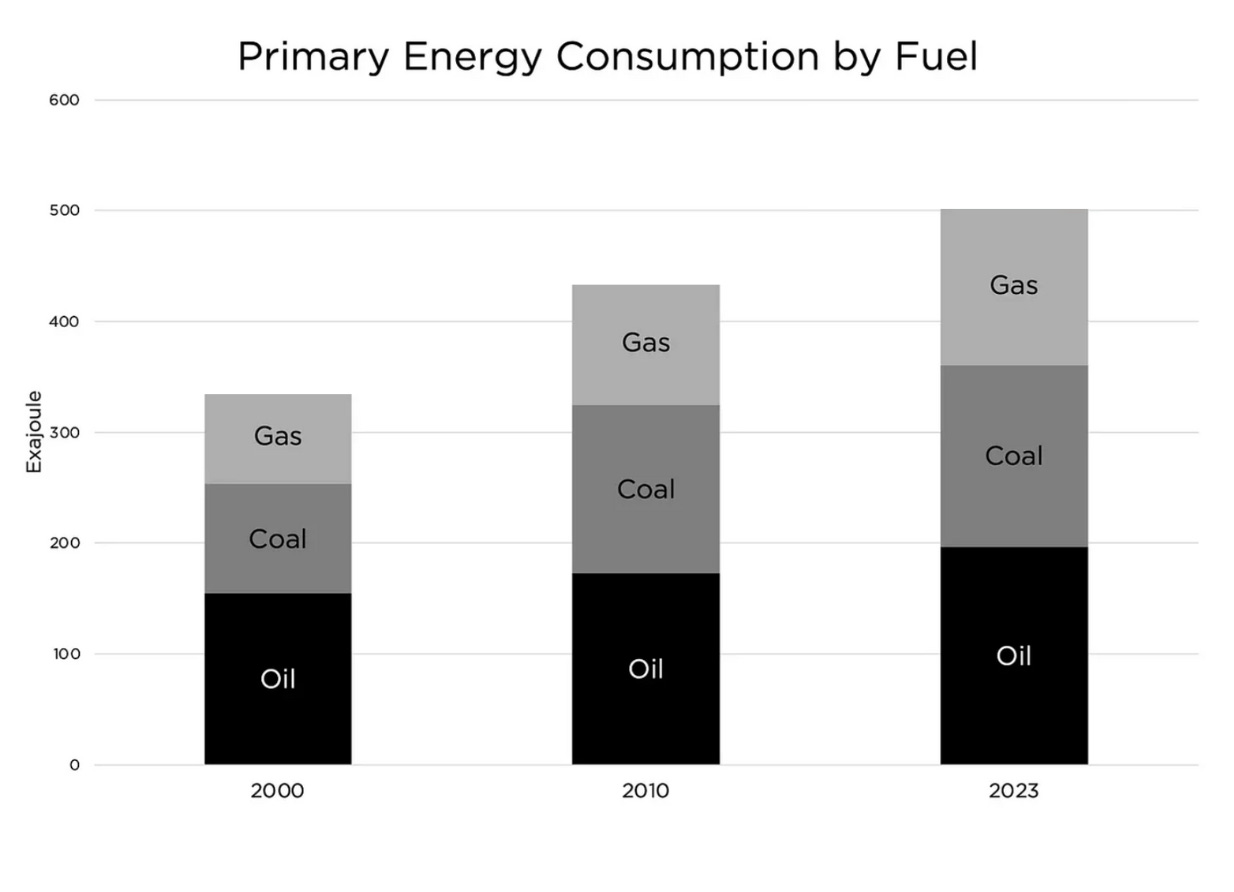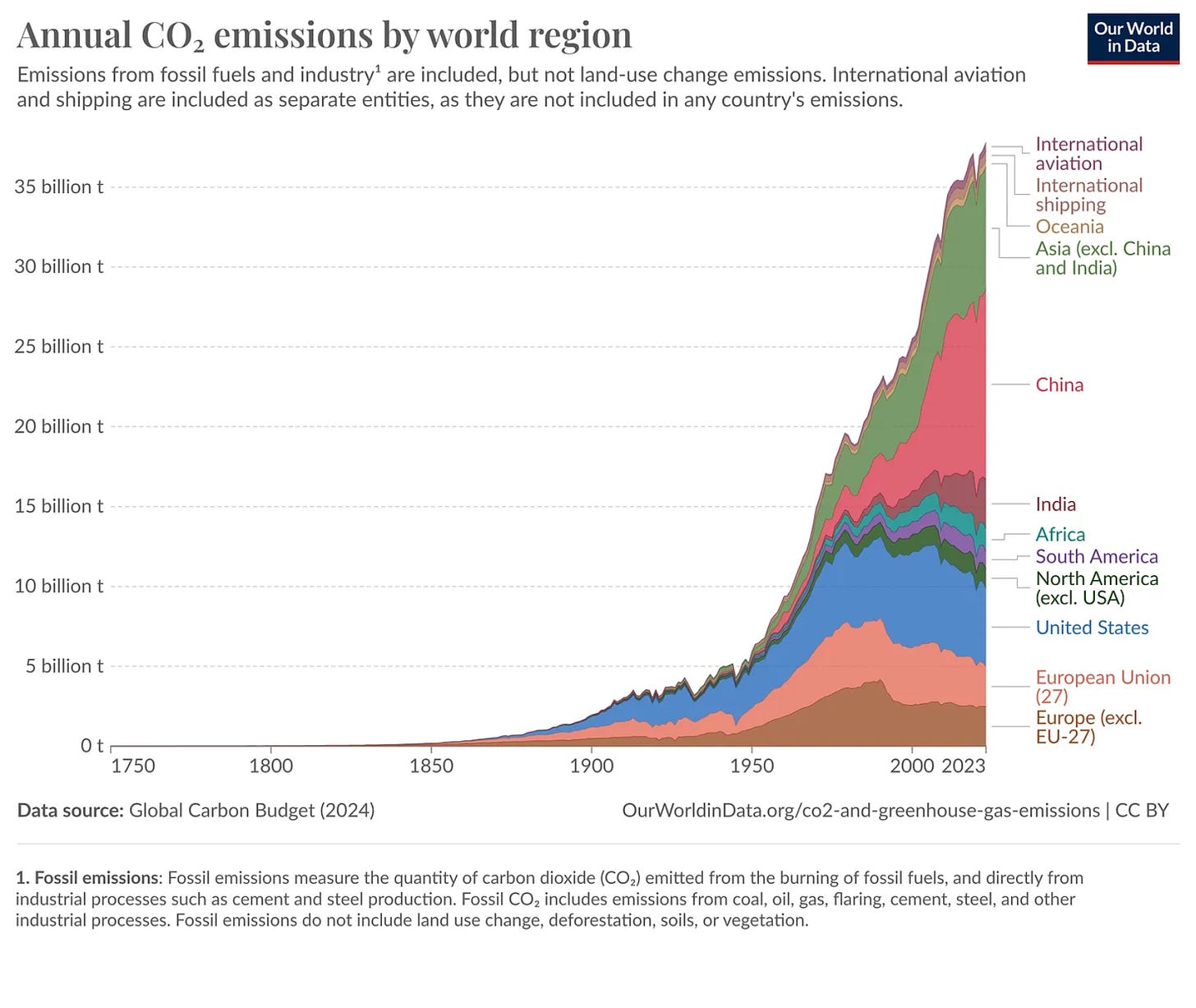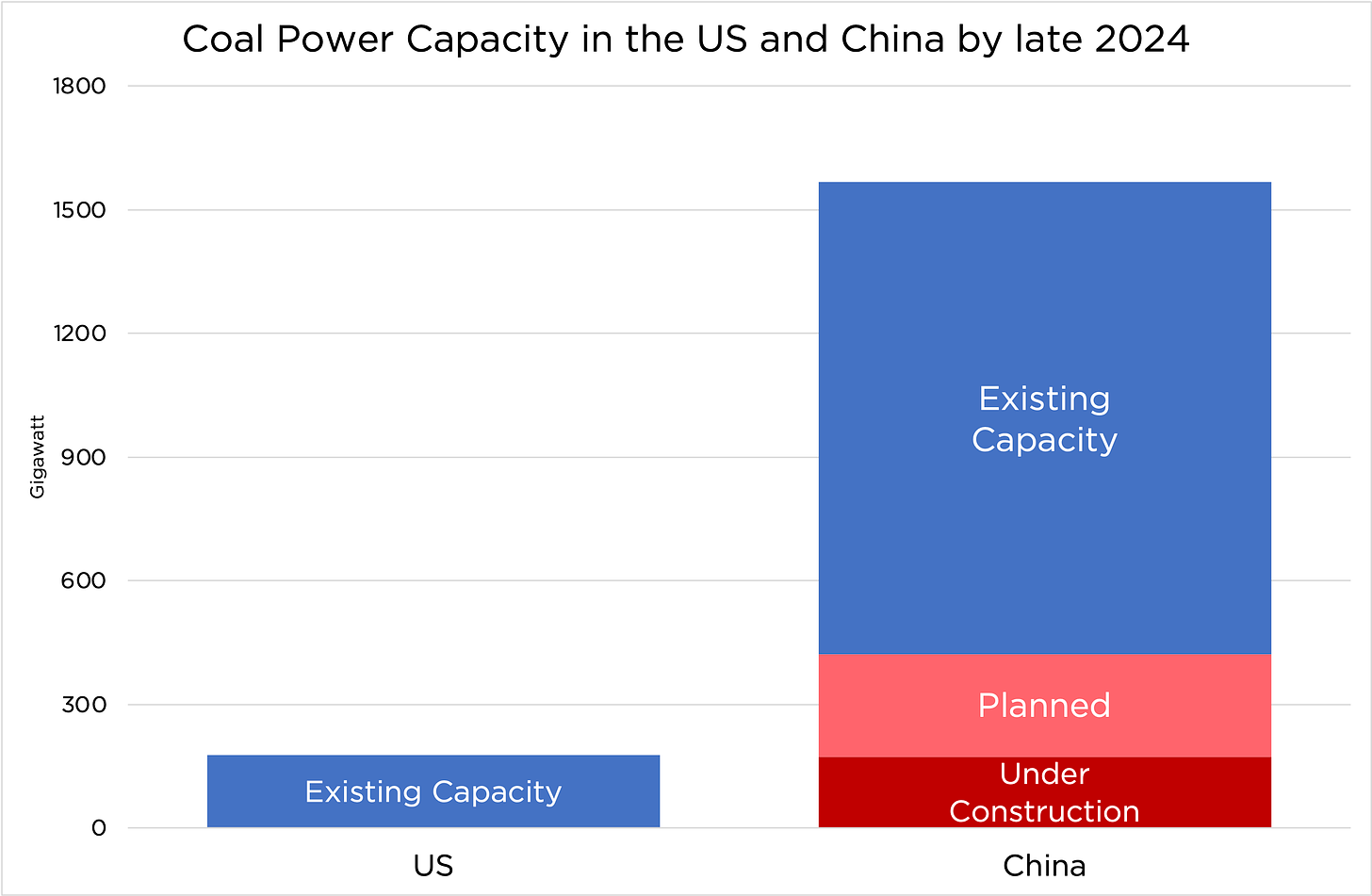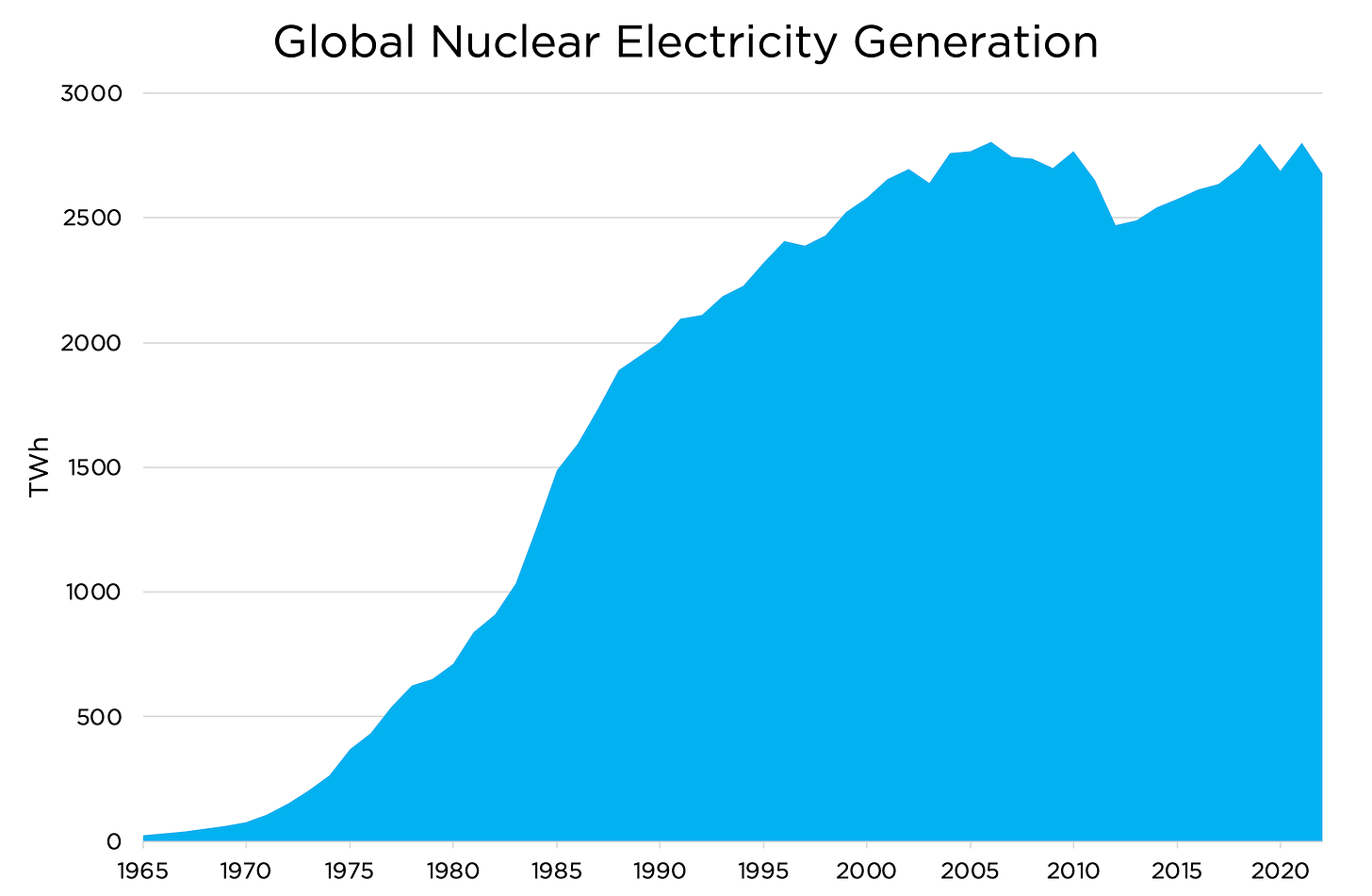3 undeniable facts about climate for #COP29
We need energy freedom to increase climate resilience and drive energy innovation
Climate debates often focus on exactly how much rising CO2 levels will impact the global climate.
The truth is, there is a lot of uncertainty here.
What is certain is that we need energy freedom to achieve climate resilience and energy innovation.
Here are the reasons why.👇
1. We need abundant energy to be resilient to climate danger.
Discussions of climate safety often treat reaching a given level of CO2 as the key to climate safety. But the last 100+ years show us that by far the most important factor for climate safety is energy abundance, because it makes possible incredible climate resilience.
It’s an irrefutable but little-known fact that as the world has warmed 1° C, humans have become safer than ever from climate danger. The rate of climate-related disaster deaths—from storms, floods, temperature extremes, wildfires, and drought—has fallen 98% in the last century.1
Why has climate safety dramatically increased as climate has become warmer? Because any challenges of warming, including any other climate changes caused by warming, have been overwhelmed by our accelerating ability to master climate. E.g., neutralizing drought via irrigation.
Why has humanity’s ability to master climate so far outpaced climate challenges? A fundamental cause is the proliferation of cheap, reliable energy, which powers the machines that enable us to master climate.
Machines powered by abundant energy have allowed us to:
master drought danger via irrigation and crop transport,
master temperature danger via heating and A/C,
master storm danger via building resilient infrastructure plus storm warning and evacuation systems2
We have primarily fossil fuels to thank for abundant energy, given that fossil fuels provide 80%+ of the world’s energy despite 100+ years of aggressive competition. And they are still growing—especially in the countries most concerned with cost-effective energy. E.g, China.3
If we consider the incredible climate resilience that abundant fossil fuel energy has given and can continue to give us, we will be much less worried about rising CO2 and much more worried about the massive climate vulnerability that would come from restricting fossil fuels.
2. The only practical and humane way to lower CO2 emissions is through energy innovation.
Even though increasing energy abundance, not decreasing CO2 emissions, is the overwhelming driver of climate safety, climate discussions often obsess about reducing emissions.
But the fact is wealthy countries desiring lower CO2 emissions is not enough to make it happen.So long as fossil fuels are the most cost-effective option for people, especially in developing nations, they will (rightly) choose to emit CO2.
The only practical and humane way to reduce emissions is energy innovation that leads to truly globally cost-competitive alternatives.Consider that the US emits < 1/7 of global CO2—and falling. The main reason global CO2 emissions are rising is because billions of people in the developing world are bringing themselves out of poverty by using fossil fuels to power factories, farms, vehicles, and appliances.4
The developing world overwhelmingly uses fossil fuels because that is by far the lowest-cost way for them to get reliable energy. Intermittent solar and wind can’t come close. That’s why China has 300 new coal plants in the pipeline.5
The only way to lower CO2 emissions and benefit America is to promote innovation that makes low-carbon energy truly reliable and low-cost. Are China and India going to stop using fossil fuels so long as they are the lowest-cost option? They won’t and they shouldn’t.
3. To achieve energy abundance and energy innovation we need energy freedom.
Both in order to have the abundant energy that climate resilience requires and the energy innovation that long-term lower emissions require, we need to be free to produce and use all forms of energy, including today’s most cost-effective and scalable option: fossil fuels.
Fact: The 2 biggest instances of CO2 reduction have come from the freedom to innovate:
Nuclear: Freedom led to cost-effective and scalable nuclear power until the “green” movement virtually criminalized it.
Gas: Freedom led to significant substitution of gas vs. coal.What promising low-carbon energy technologies need above all to become cost-competitive is freedom to innovate. Entrepreneurs need to be free to rapidly test, implement, and evolve their ideas—whether for a promising nuclear power plant design or for a new type of deep geothermal well.
Instead of low-carbon energy evolving to become more cost-effective than fossil fuels, we are seeing huge government preferences for solar and wind “solutions” that make electricity more expensive and less reliable, while nuclear is stagnant or declining in much of the world.6
America’s and other governments’ promotion of non-cost-effective low-carbon energy and impeding of promising low-carbon nuclear energy has led to a situation where there is no globally cost-competitive low-carbon energy on the horizon.
The standard climate conference approach of trying to rapidly eliminate fossil fuel use will destroy energy abundance, destroy prosperity, and make us too poor for genuine energy innovation. It should be replaced by an energy freedom approach.
Whether you think more CO2 will lead to 1 or 2 or 3° of warming this century the fact is restricting fossil fuels will make energy expensive and scarce, which will make us both endangered from climate and too poor to afford to invest in energy innovation.
We need energy freedom.
Popular links
EnergyTalkingPoints.com: Hundreds of concise, powerful, well-referenced talking points on energy, environmental, and climate issues.
AlexAI: Instant answers to your questions on energy, environmental, and climate issues.
My new book Fossil Future: Why Global Human Flourishing Requires More Oil, Coal, and Natural Gas—Not Less.
“Energy Talking Points by Alex Epstein” is my free Substack newsletter designed to give as many people as possible access to concise, powerful, well-referenced talking points on the latest energy, environmental, and climate issues from a pro-human, pro-energy perspective.
UC San Diego - The Keeling Curve
For every million people on earth, annual deaths from climate-related causes (extreme temperature, drought, flood, storms, wildfires) declined 98%--from an average of 247 per year during the 1920s to 2.5 per year during the 2010s.
Data on disaster deaths come from EM-DAT, CRED / UCLouvain, Brussels, Belgium – www.emdat.be (D. Guha-Sapir).
Population estimates for the 1920s from the Maddison Database 2010, the Groningen Growth and Development Centre, Faculty of Economics and Business at University of Groningen. For years not shown, population is assumed to have grown at a steady rate.
Population estimates for the 2010s come from World Bank Data.
UC San Diego - The Keeling Curve
For every million people on earth, annual deaths from climate-related causes (extreme temperature, drought, flood, storms, wildfires) declined 98%--from an average of 247 per year during the 1920s to 2.5 per year during the 2010s.
Data on disaster deaths come from EM-DAT, CRED / UCLouvain, Brussels, Belgium – www.emdat.be (D. Guha-Sapir).
Population estimates for the 1920s from the Maddison Database 2010, the Groningen Growth and Development Centre, Faculty of Economics and Business at University of Groningen. For years not shown, population is assumed to have grown at a steady rate.
Population estimates for the 2010s come from World Bank Data.
